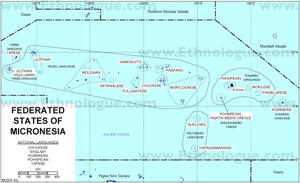Signs - in general
The most effective way of communicating the dangers of and proper protocol following a
tsunami to the populace is to post signs. These signs will be up all year. We expect the
signs to cost about $15/sign, $15/arrow, $10/post, and a maximum of $10/sign for the labor
of proper installation. Over all, signs will cost $50/sign, and we expect to use around
$20,000 worth of signs per country.
trafficsignstore.com
Choosing the Signs
There are two different types of signs that we think are necessary: one type of sign alerting people of the evacuation route (evacuation route signs) and one type alerting people to tsunami "safe" locations (evacuation site signs). The evacuation route signs should depict a series of waves and a person running up a steep incline. In this way we are able to quickly tell the people that tsunamis may come in more than one wave (as they usually do) and that they should run away from the waves up a steep incline. We believe that it would also be a good idea to have an image that represents the evacuation site on the sign as well, though that may prove to be less economically feasible. Each sign will be accompanied by an arrow pointing in the direction of the evacuation site.
Installation
The signs will be oriented depending on the location of the viewer of the sign to the water
(meaning that the waves on the sign will always be closest to the ocean and the man running up
the hill will be closest to inland). This means that mirror images of the signs must be made
and posted appropriately.
Also, the evacuation route sign should be posted so that it can be read by oncoming traffic
as well as pedestrians. The arrow should remain pointed in the direction of the evacuation site.
This means that the majority of signs will be posted making 90-degree angles with themselves.
To protect against theft (as these are really cool signs), we propose the use of special screws
that do not use the normal philips, flathead, or hexogonal screwdrivers. Though it will still be
possible to take the signs, it would be more difficult and therefore much more rare. This would
cost an additional $0.39/screw(
brycefastener.com/hexpinshe.htm).
Oregon's Tsunami Warning Signs
Basic Tsunami Warning Sign
These are the signs that will be used along the evacuation routes:

Micronesian Languages
Micronesia has quite a cornicopia of languages. The surviving languages include the following: Chuukese, English, Kapingamarangi, Kosraean, Mokilese, Mortlockese, Namonuito, Ngatic Men's Creole, Nguluwan, Nukuoro, Pááfang, Pingelapese, Pohnpeian, Puluwatese, Satawalese, Ulithian, Woleaian, and Yapese.
Because of the large variety of languages, making the text for signs understandable to all will be very difficult. In order to do this, we must determine the most prevalent languages on each island and make signs based on that information.
Based on the map above, we have determined the main languages spoken on the islands that we are focusing on for our evacuation plan.
Languages for the Signs
For the five most populated islands, listed below, we will be using the two most common languages spoken on the island.
Pohnpei
The two most prevalent languages spoken on this island are Pohnpeian and English. Because Pohnpeian started out as a strictly oral language, written Pohnpeian often does not carry the meaning of the words as accurately as speaking them. Hence, English is most commonly used for written communication (source). Therefore, the signs for Pohnpei will be written in English.
Tol and Weno
For the Chuuk Islands, Chuukese is mostly used for written documents, like the Bible. However, the most prevalent written language is English, meaning that the signs for Tol and Weno should be in English (source). Also, English is the required spoken language in school from 3rd grade to high school, so most of the younger generations are already fluent in English (source).
Kosrae
For Kosrae, the old spelling systems are used mainly in the Bible; the high language and common language are used in written government documents and also in school textbooks. English is also a popular language. Therefore, for Kosrae, we will use Common Kosraean and English (source).
Yap
Yap uses many languages including Japanese, English, Yapese, and Ulithian among others. Japanese is really not used that much, mostly by older people. English is most used in communication, though Yapese is also quite prevalent. So, the signs will be in English and in Yapese (source).
Sign Text
The top will read "EVACUATION ROUTE"The bottom will read "IN CASE OF EARTHQUAKE OR TSUNAMI, FOLLOW SIGNS TO SAFETY"
As Micronesia's evacuation sites will all be roughly the same, there is no reason to put a symbol for the evacuation site on the sign as well (like we did for Peru. For more information, please see the section on Peru's Signs).
The signs indicating the tsunami "safe" zones will read "TSUNAMI EVACUATION SITE"
